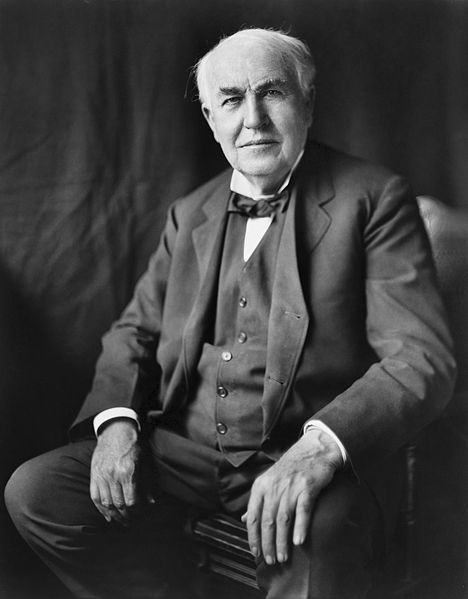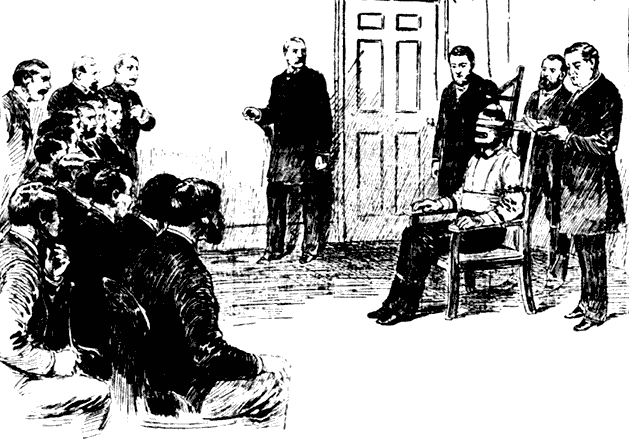Thomas Edison and the Electric Chair,In the late 1800’s a war was being fought between the famous in
Thomas Edison and the Electric Chair,In the late 1800’s a war was being fought between the famous inventor Thomas Edison and the famous industrialist George Westinghouse. Called the “War of the Currents” the event was a series of marketing schemes created to determine who would supply electricity to the United States. Thomas Edison espoused the use of direct current (DC), while George Westinghouse pushed the idea of alternating current (AC), a new form of electric current developed by the inventor Nikola Tesla. Thomas Edison was at a great disadvantage and he knew it. Alternating current was much more efficient than direct current. More importantly alternating current could be transported over vast distances. Direct current could only be transported a few miles at best. The powering of New York City alone would require scores of coal fired electricity plants placed throughout the city, whereas with alternating current a network of plants could power an entire region of the country. It was clear that if America wanted electricity, it was going to have to use alternating current.This left Edison in quite a quandary as he was growing wealthy on the royalties made off of his direct current inventions. To compete with Westinghouse, Edison started a fervent marketing campaign to convince the American public that alternating current was an unsafe form of power. In the late 1880’s Edison held a nationwide campaign of live demonstrations where he electrocuted animals using a Westinghouse AC generator. This included dogs, cats, cattle, horses, and rabbits. He even electrocuted a circus elephant named “Topsy” who had killed three handlers at Coney Island. However it was on August 6th, 1890 that Edison would have the greatest demonstration of the dangers of AC power.In the 1880’s the State of New York was searching for a new way to execute prisoners that was more humane than the standard hanging or firing squad. Pushed by Edison, Alfred P. Southwick, a member of the committee to investigate new execution methods, proposed the idea of using electricity to do the job. He cited a case where a man was instantly killed after touching exposed power lines. The proposal was granted approval for testing, and Edison commissioned two of his employees, Harold P. Brown and Arthur Kennelly, to construct the execution device. Along with Southwick, the two men constructed a chair in which the condemned could be restrained, while electrodes would deliver lethal electric shocks to the brain, killing the prisoner instantly. At least that was the theory.The first man condemned to die by the newfangled electric chair was William Kemmler, who had been convicted of murdering his wife with a hatchet. On August 6th, 1890 Kemmler was strapped down into the chair and hooked up with electrodes which were connected to a Westinghouse AC generator. It was believed that the electric current would kill Kemmler instantly, as the electrodes were used to successfully kill a horse the day before. Unfortunately Kemmler was no horse and the Edison men had no clue what they were doing.The electrician gave Kemmler a 17 second, 1,000 volt blast. After much convulsing Kemmler was still alive and well, making a chilling groaning sound as he slumped in the chair with fluids running out of his mouth. The electrician then upped the power to 2,000 volts giving him a more sustained shock. Blood vessels ruptured, his hair singed, and his flesh burned where the electrodes were connected. Witnesses were forced to vacate the room because of the overwhelming smell of burning hair and flesh. Amazingly, though cooked, Kemmler was still alive as a doctor found he had a pulse. The electrician once again upped the voltage to 3,000 volts, delivering one last fatal jolt that ended Kemmler’s life forever. In all the execution lasted eight agonizing minutes.The news of the execution hit the newspapers immediately. All over the country journalists condemned the electric chair as an instrument of torture, barbarity, and inhumanity. George Westinghouse himself commented, “they would have done better using an axe”. Thomas Edison got exactly what he wanted, as the American public shied away from the use of alternating current after the botched execution. However, Edison’s victory was very short lived. Despite the seeming danger, only alternating current was cheap and efficient enough to power the growing industrial nation. Eventually alternating current would come to dominate the energy industry, driving Edison out of business and making Westinghouse one of the great captains of industry. Today we would not have the amenities and standard of living that we take for granted without AC power. Despite the horrifically botched execution of William Kemmler, the electric chair would become the number one method of execution in the United States. By the 1980’s the electric chair gave way to lethal injection as America’s method of choice for execution. Today electrocution is a secondary option in a handful of southern states, only done by request of the prisoner. Incredibly, the last man to die by electric chair so far is Robert Gleason, who was executed in Virginia on January 6th, 2013. -- source link
Tumblr Blog : peashooter85.tumblr.com
#history#death#thomas edison#execution#crime#criminals#death penalty#electricity#george westinghouse#electric chair#direct current#alternating current#inventors#inventions#nikola tesla

